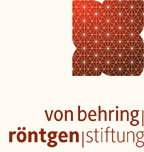 |
||
[ home ]  |
[ projects ] [ funding ] projects / interest |
|
|
Redox reactions - the transfer of electrons - are an essential requirement for cell metabolism, most notably in form of biological energy transduction in the inner mitochondrial and plastidal membranes. As a consequence, numerous cellular compounds undergo redox modifications, and some of these redox-modified molecules function in signal transduction.
Redox modifications have long been discussed to be the result of increased levels of pro-oxidants, for instance due to irradiation or decreased levels of antioxidants. These conditions, defined as oxidative stress, were often visualized in form of a scale and an imbalance between pro-oxidants in one pan and antioxidants in the other pan. Up to now, this dis-equilibrium has been correlated with many disorders and pathologies, including cancer, neuro- and cardiovascular diseases. Recently, our view of redox biochemistry evolved rapidly, realizing and establishing redox changes as physiological, rapid, specific and reversible cell signaling events and a form to regulate the activity of key proteins. Moreover, redox signaling was shown to be localized to distinct regions within a cell or even a compartment at a given time point, affecting distinct redox couples such as GSH/GSSG or NADH/NAD+ differently. This so called compartmentalized redox signaling therefore stands in opposition to the view of an overall cellular redox balance, which implies that all cellular redox couples are reduced or oxidized to a similar degree by the same stimuli. Many key regulators of redox signaling and thus of the intracellular effects of ROS and RNS are members of the thioredoxin-fold family of proteins, among them the proteins highlighted in this review: thioredoxins (Trxs), glutaredoxins (Grx), and peroxiredoxins (Prxs). Members of this protein families are ubiquitously expressed in all organisms, tissues, cell types, and organelles. Some of these proteins can even shuttle between cellular compartments and to the extracellular space. Our main interest is to identify redox control circuits of medical relevance and how these are altered in different disease conditions including cancer, Diabetes mellitus, neurodegenrative disorders, neuronal development, and inflammation. The following questions are the basis for our work:
Deponte, M., and Lillig, C.H., Enzymatic control of cysteinyl thiol switches in proteins. Biol. Chem. 396: 401-13 (2015) [medline] Gellert, M., Hanschmann, E.M., Lepka, K., Berndt, C., and Lillig, C.H. Redox regulation of cytoskeletal dynamics during differentiation and de-differentiation. Biochim. Biophys. Acta - Gen. Sub. 1850: 1575-158 (2015) [medline] Berndt, C., Lillig, C.H., Flohe , L. Redox regulation by glutathione needs enzymes. Front. Pharmacol. 5: 168 (2014) [medline] Hanschmann, E.M., Godoy, J.R., Berndt, C., Hudemann, C., and Lillig, C.H. Thioredoxins, glutaredoxins, and peroxiredoxins - molecular mechanisms and health significance: from cofactors to antioxidants to redox signaling. Antioxid. Redox Signal. 19: 1539-1605 (2013) [medline] [journal/ARS] Lillig, C.H., and Berndt, C. Glutaredoxins in Thiol/Disulfide Exchange. Antioxid. Redox Signal. 18: 1654-1665 (2013) [medline] [journal/ARS] Lillig, C.H. and Berndt, C. Thioredoxins and Glutaredoxins. Functions and Metal Ion Interactions. in "Metallothioneins and Related Chelators" , Vol. 5 of 'Metal Ions in Life Sciences'; A. Sigel, H. Sigel, R. K. and O. Sigel, Eds.; The Royal Society of Chemistry, Cambridge, UK, in press (2009) [publisher/RSC] Lillig, C.H., Berndt, C., and Holmgren, A. Glutaredoxin systems. Biochim. Biophys. Acta - Gen. Sub. 1340: 1304-1317 (2008) [medline] [journal/BBA] Berndt, C., Lillig, C.H., and Holmgren, A.Thioredoxins and glutaredoxins as facilitators of protein folding. Biochim. Biophys. Acta - Mol. Cell Res. 1783: 641-650 (2008) [medline] [journal/BBA] Hudemann, C., Berndt, C., and Lillig, C.H., Glutaredoxine und Eisen-Schwefel Zentren. Biospektrum 14: 32-35 (2008) Berndt, C., Lillig, C.H., and Holmgren, A. Thiol-based mechanisms of the thioredoxin and glutaredoxin systems: implications for diseases in the cardiovascular system. Am. J. Physiol. Heart Circ. Physiol. 292: H1227-1236 (2007) [medline] [journal/AJPHCP] Lillig, C.H., and Holmgren, A., Thioredoxin and related molecules - from biology to health and disease. Antioxid. Redox Signal. 9: 25-47 (2007) [medline] [journal/ARS] Holmgren, A., Johansson, C., Berndt, C., Lönn, M.E., Hudemann, C., and Lillig, C.H., Thiol redox control via thioredoxin and glutaredoxin systems. Biochem. Soc. Trans. 33: 1375-1377 (2005) [medline] [journal/BST] (Our full publication list can be found here) |
||
We gratefully acknowledge the financial support provided by the following funding organizations: |
||
 The German Research Foundation (DFG) The German Research Foundation (DFG)(Emmy-Noether programm) (Sonderforschungsbereich 593) Schwerpunktprogramm 1710 Graduiertenkolleg 1947 Schwerpunktprogramm 1927 |
||
| Previous support: | ||
 Federal Minstry for Education and Science (BMBF) Federal Minstry for Education and Science (BMBF)PAREDOX |
||
 German Diabetes society (DDG) German Diabetes society (DDG) |
||
 von Behring-Röntgen Foundation | ||

| ||
 The Swedish Society for Medical Research, Stockholm, Sweden |
||
 Karolinska Institutet, |
||
|
[2017-03-20] [ page top ] |
||